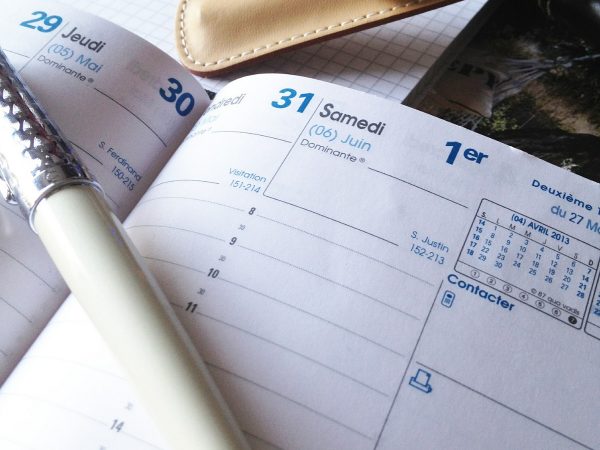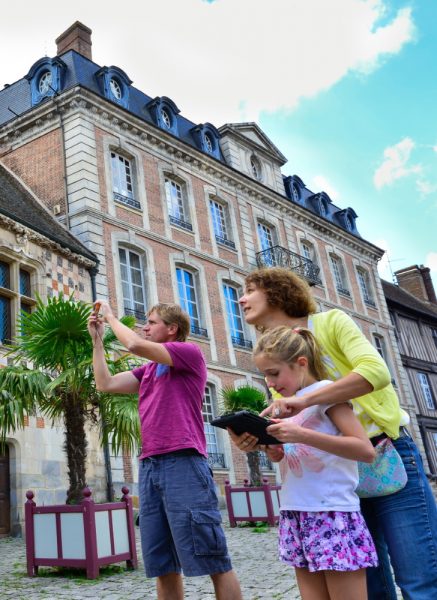There are walks that mark your memory. The Avre de Nature circuit is one of them! I couldn't experience this trail without sharing it!
A few years ago, I would walk this same path in the middle of winter, under a fine snow, in the company of two Montignois (inhabitants of Montigny-sur-Avre) passionate about nature and heritage. The object of this walk was the creation ofa hiking circuit highlighting the natural and heritage riches of the municipalities of Montigny-sur-Avre and Courteilles. 3 years later, a free booklet was born. He comments on and illustrates these marked hiking trails allowing you to walk 3, 6 or 12 km along the Avre river.
In this August afternoon, I return on this path with much more favorable weather conditions. Remembering a portion of the circuit perfectly, I decide to cover only half of the way.
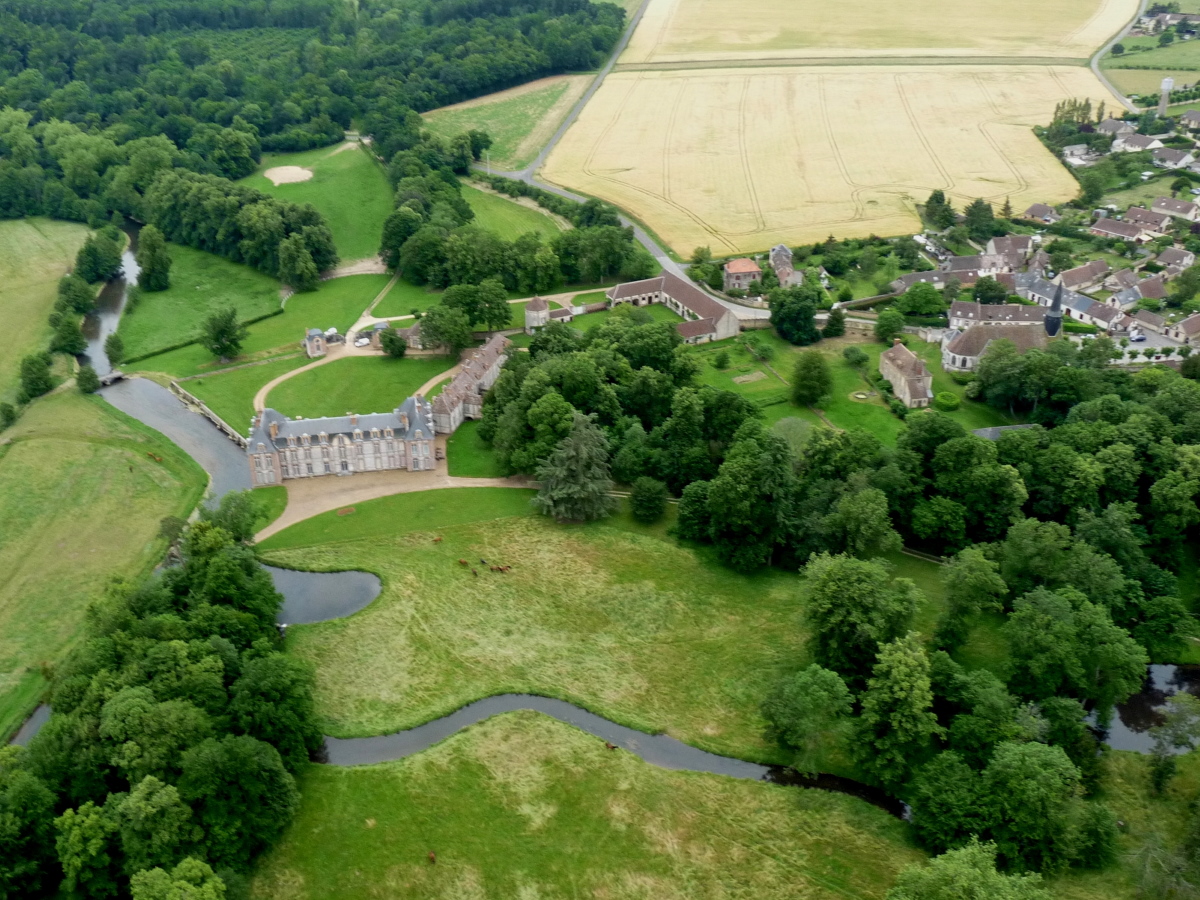
Parked in front of the Town Hall of Montigny-sur-Avre, I put on my hiking boots when I saw a family wearing hats and equipped with hiking poles taking the road with, in their hands, the famous "Avre de Nature" booklet. We exchange a knowing smile knowing that we are going on the same path.
The walk therefore begins in the heart of the village with a view of Saint-Martin church where was baptized, in the 17th century, François de Laval de Montmorency, first bishop of Quebec, who gave his name to the city of Laval and its university. A commemorative plaque sealed in the wall of the nave, recalls the links of the village with this great man beatified by John Paul II in 1980.
A few meters further, we approach the Montigny castle, where the man named above was born. The building, listed as a Historic Monument, has a magnificent English-style park with plantations, set of rivers and waterfalls.

I continue my way to the forest. I notice that the markup is clear and precise. Impossible to lose me. At the edge of the woods, I face an interminable rectilinear avenue with variable relief. The light fades in the heart of this magnificent forest. It is cooler there. I hear the wind blowing through the foliage and the trees seem to converse among themselves with grinding and graceful swaying.
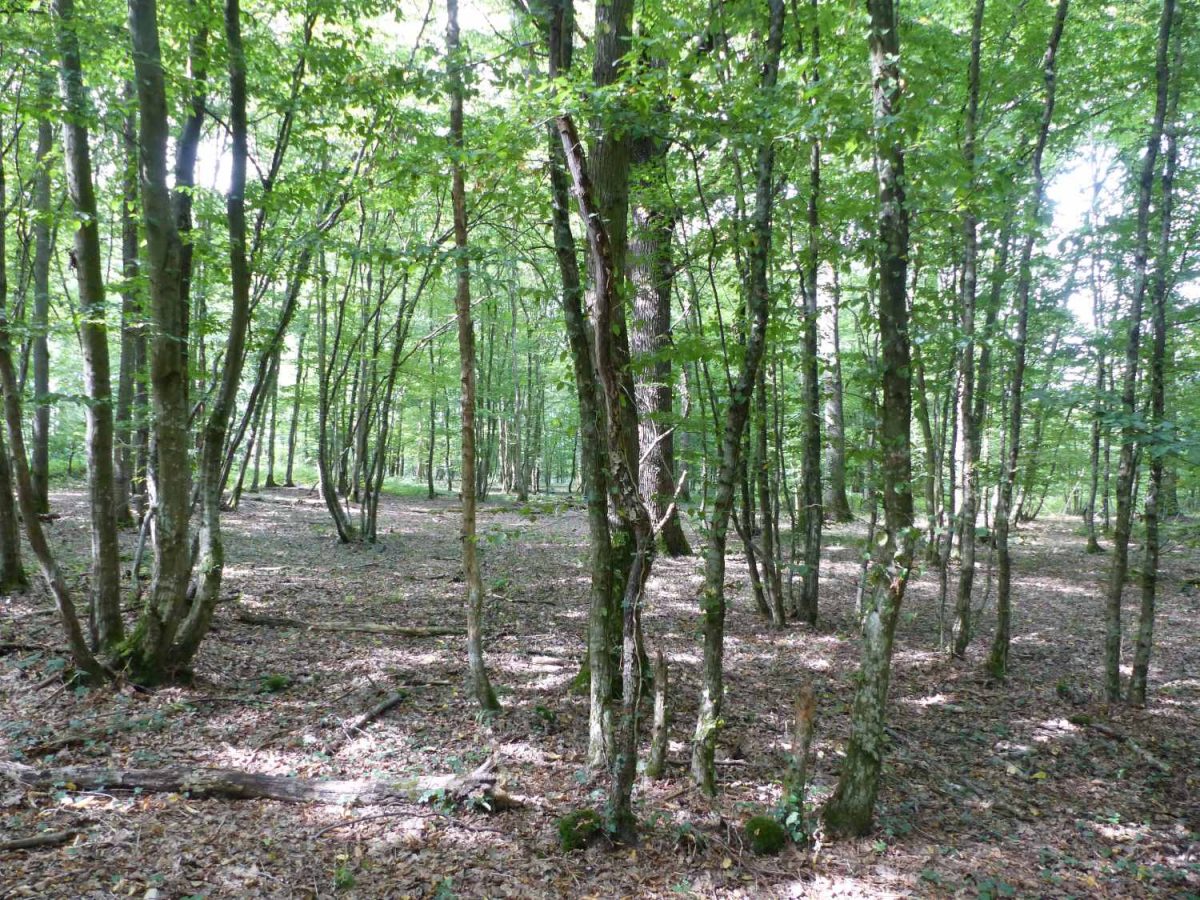
This "avenue" is in fact the route of the Avre aqueduct which is still underground at this location. This structure, inaugurated in 1893, supplies Paris with drinking water from its source located in Rueil la Gadelière, barely 3 kilometers upstream. What a strange feeling to know that, under my feet, up to 100 m000 of water flows from our peaceful countryside to the capital, a hundred kilometers away!
Right in the middle of this alley, in the middle of the forest, a strange construction emerges: a wooden door surrounded by a turret of stones and bricks. I feel a bit like Alice in Wonderland and expect to see from behind that door a bunny and his pocket watch screaming that he's late! It's done a look for access to the aqueduct. I will come across several of different sizes throughout my walk.
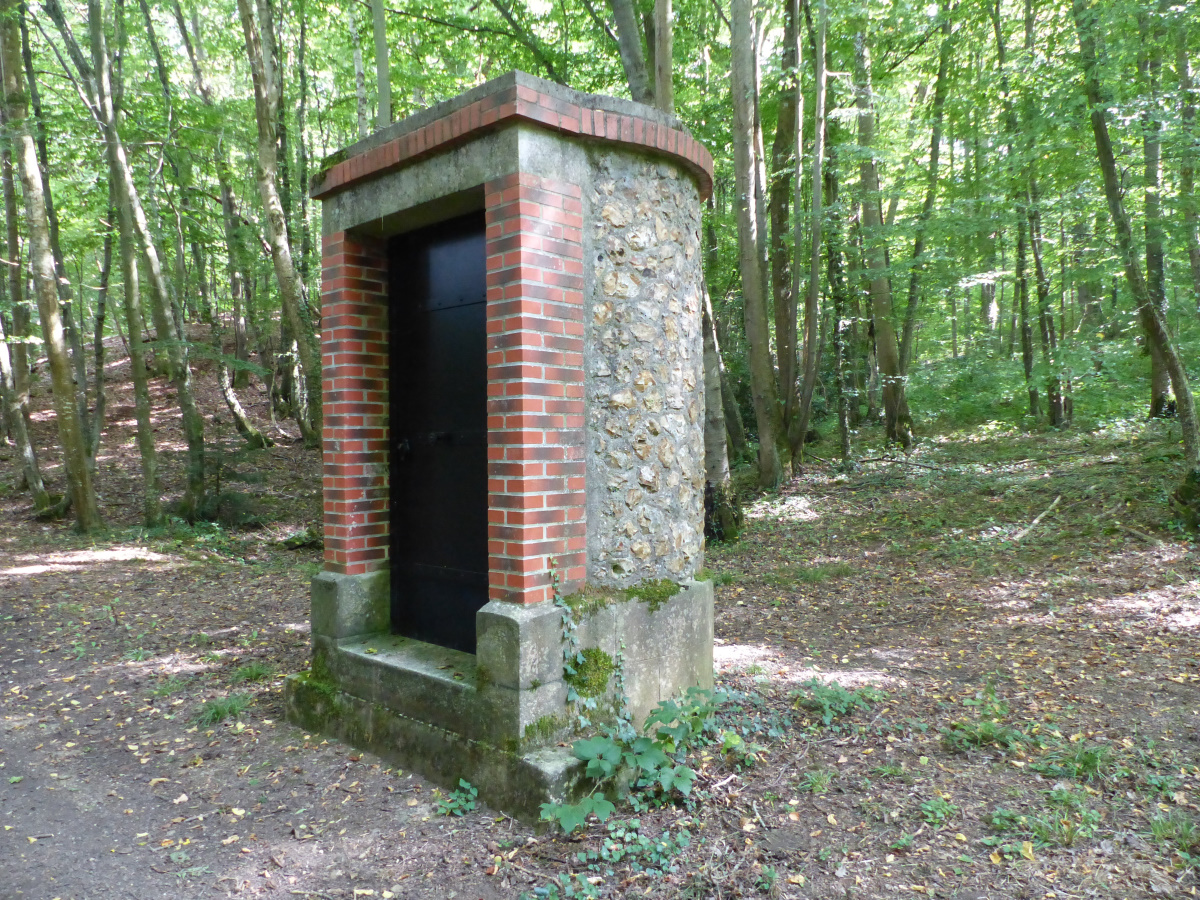
It comes out on the edge of an agricultural plain to reenter a winding forest path. I meet a mountain biker who is struggling to finish the ascent of the stony path. Around me, I use the booklet to locate ferns, nettles, genet, callune, Jacynthes, honeysuckle or even lemon balm. Beyond the pleasure of the eyes that this variety of meadow and forest plants, there are a few wild cooking recipes that come to mind ...
Several dozen butterflies flutter around me. They will not leave me until the end of the ride! Yellows, whites, reds… It's magic! As I barely grab one of them with my camera, a thud of foliage arises behind me. I can easily imagine a doe, a fox or worse ... a boar less than 2 meters from me! Stupid reflex: I start screaming before running away. Fortunately, I am not followed. The beast was as scared as I was. And I feel ridiculous! I come to my senses and continue my way casually.
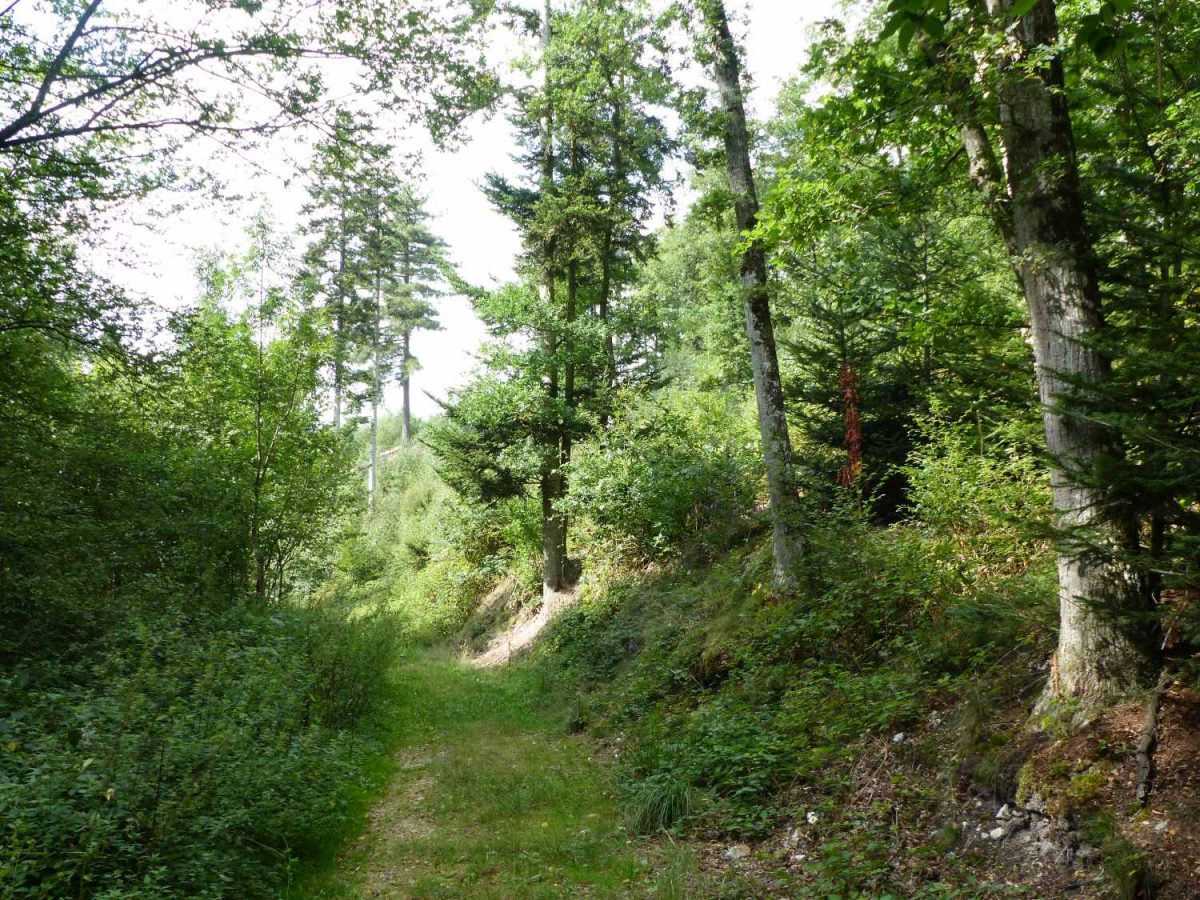
Coming out of the woods, I find myself facing the Mill of Planks. This old mill, remarkably restored, is today a reception hall with accommodation for family reunions in a magnificent setting. I cross the Avre river for the first time.
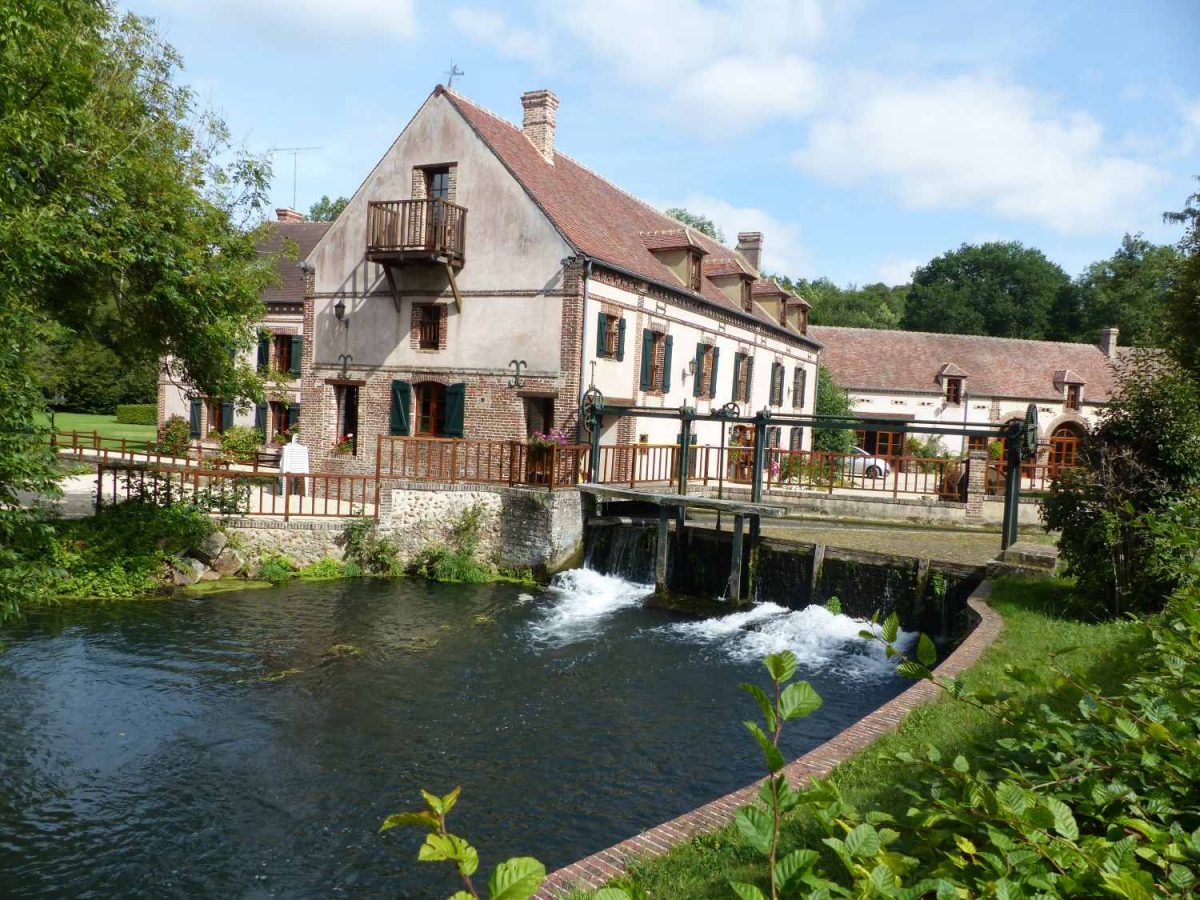
With my foot on the asphalt, I climb to the top of this dead end before arriving on a plateau. There, I am a dirt road in the middle of the fields. The wind is cool, but the sun is beating hard. I take a break to drink some water and put on a hat. The butterflies are still there and encourage me to hit the road again in the middle of these green landscapes as far as the eye can see.
I approach a few houses then return to the asphalt road. At the sight of the red and white markings, I know I'm walking on the GR22, the legendary miquelots path going from Paris to Mont-Saint Michel.
The slope is descending again and I arrive in front of the gate of the Jarrier castle. This private property was built in 1883 by a chemistry professor at the Sorbonne who was passionate about the neo-Gothic architecture of Viollet-le-Duc. The caretaker's house and the outbuildings, clearly visible from the road, combine the half-timbered walls with the sets of bricks.
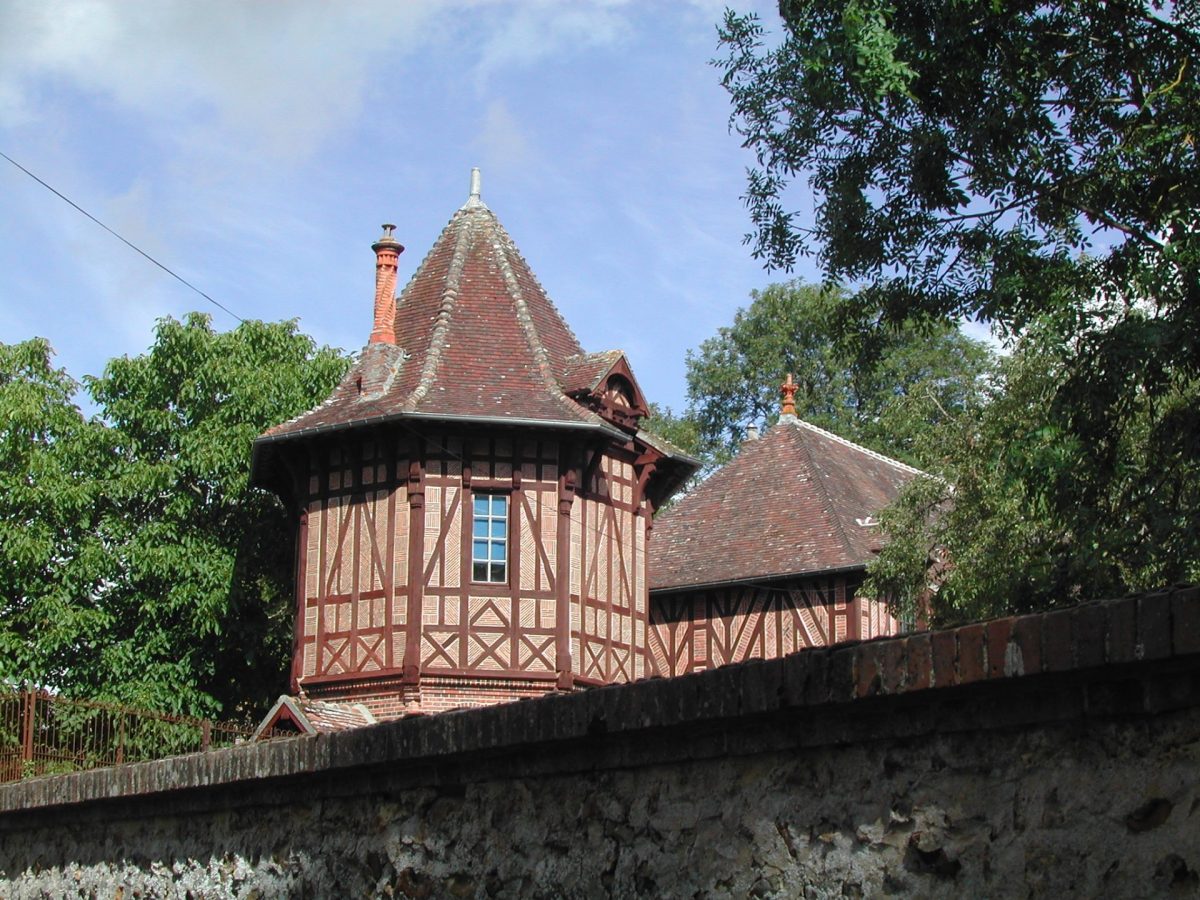
It is then that I cross the path of a small dog who is resting in the fresh grass by the side of the road. I salute him. The rascal then begins a spinning at a reasonable distance. He will follow me for nearly 15 minutes before finally returning to his house.
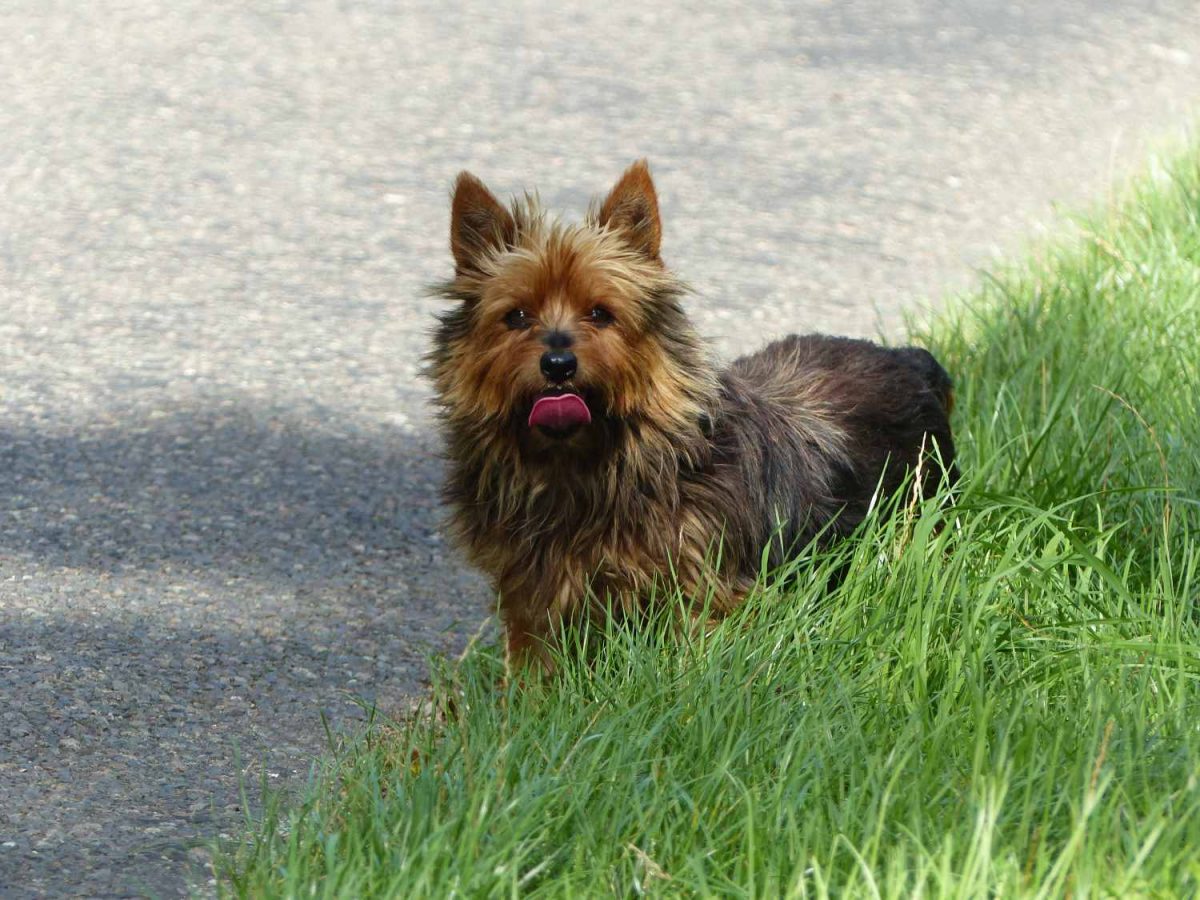
I do not see it, but I pass in front of the remains of the castle of Courteilles. Erected in the XNUMXth century by the Marquis de Courteilles and Governor of Verneuil, this huge building required the destruction of the ramparts of the medieval city of Verneuil for the reuse of its stones. Later, Alexandrine-Rosalie, wife of the Duke of Richelieu, lived there separated from her husband. The tomb of the Duchess is still visible at the church of Courteilles in front of which I will pass a little further.
For now, no castle in sight. And for good reason: in 1849, the heiresses, overwhelmed with debts, sold the property to two speculators who immediately demolished three quarters of the castle to sell the materials. The end of the left wing, preserved, was sacked under the Occupation and fell into ruin.
At the crossroads, before going down towards the church, I see a small oratory a few meters along the road. It is a Mariette. These small houses, generally housing a pietà, bear witness to the Christian faith and to the gratitude of believers who have come to ask for the grace of the Virgin Mary.
I join the church of Courteilles. Its cemetery preserves the memory of the Courteilles family through the graves of its various members, including Alexandrine-Rosalie.
I cross various branches of the Avre before entering the Allée du Larry, of which the entrance gate of this old stately alley remains. This tree-lined alley is also a portion of the legendary GR22 stretching from Paris to Mont-Saint-Michel. I go along the Avre by the south shore.
Finally, I come to a residential dead end. Before reaching the center of Montigny and my starting point, I am still on the GR22 for a few meters in order to get a little closer to the Avre. I access a footbridge which allows me to admire the winnowing of an old mill. Then I return to the dead end.
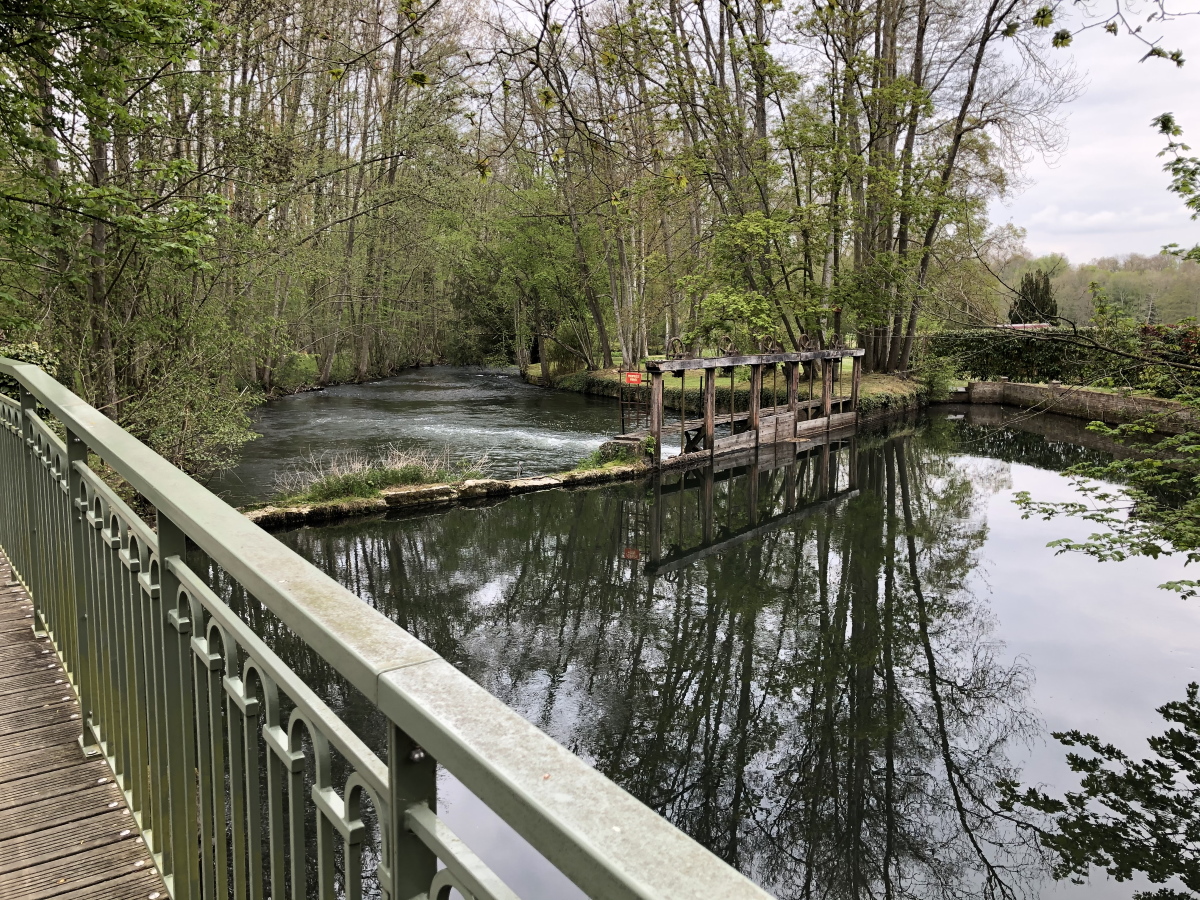
Here, peace and quiet are the residents' paradise. I see a woman sitting in her garden, absorbed in reading a novel. Respecting his privacy, I go my way in silence.
The Avre de Nature circuit has kept its promises. A true haven of peace surrounded by nature. A hike to go without moderation!

